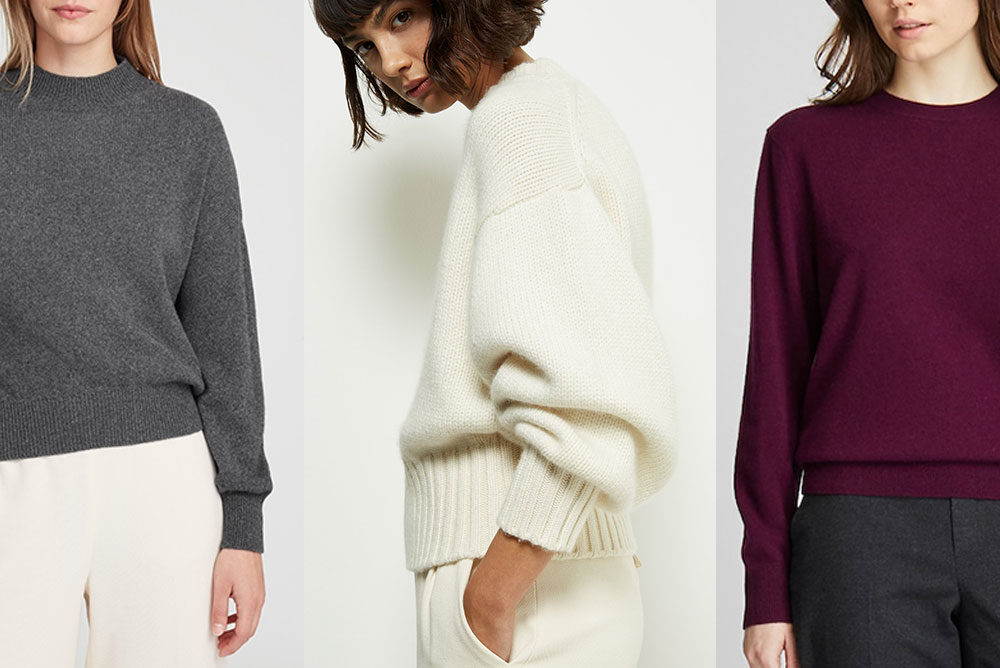
iStock
IF WE WERE assigning grades to fabrics, cashmere would likely earn an A—at least from David DaPonte, USA Representative for the Cashmere and Camel Hair Manufacturers Institute (CCMI). He says, “It’s a great, durable fiber. It can absorb and release moisture, keeping you warm (up to eight times warmer than wool) in the winter and cool and comfortable on a spring night.”
—
I have accumulated a cache of cashmere sweaters—from Banana Republic, Brooks Brothers, Theory and Jil Sander—in a range of prices. But how is it possible to get a 100 percent cashmere sweater for $90, $300 or $2,000? The cashmere all comes from the same source —goats. And even the splurgiest sweaters can pill!
—
What Matters
Most of the world’s cashmere comes from goats in Mongolia, where the frigid climate produces the longest and finest hair. Traditionally, the hair is hand-combed once a year in the spring and then the hairs are sorted into grades and washed. Considering that to make one sweater it takes about three goats, the raw material is on the precious side.
—
What separates cashmere from wool is the fineness of the fiber, says DaPonte. Raw cashmere hair is measured in fiber diameter or microns (one micron is a thousandth of an inch). Grade A cashmere is in the 14 to 15 micron range; Grade B, 16 to 19. Merino wool is in the 19-20 range. Human hair? 100 microns.
—
The cost of raw materials matters but so does where the fiber is spun, knitted and made into a sweater or other garment. Mills and factories in Italy and Scotland are well known for their expertise in manufacturing cashmere products. They’ve been at it hundreds of years, compared to China’s 35-plus years. On the Pringle of Scotland website: “The unique Pringle of Scotland cashmere feel has been developed over many decades. We require specific degrees of twist and percentage of oil in our yarns and we specify the exact tension that we want our cashmere knitted to. ”
—
Also to consider, says DaPonte, are that you’re paying more for design, a brand name, quality stitching, buttons and zippers and how much an employee is paid. You can bet an Italian employee is better paid than an Asian. But for a label like Uniqlo, economies of scale factor into the price. Uniqlo has much more volume than say a Loro Piana (see below). You’ll pay accordingly.
—
What to Look For
It would be great if labels listed the cashmere ply and grade on the label. That’s not always the case. Forget single-ply. Two- (or three- or four-) ply are sturdier, says DaPonte. (The number of ply indicates how many strands have been twisted together to make the yarn.) In general, you’re looking for a tightly woven knit, which should mean a garment that has staying power. Hold a sweater up width-wise, stretch it out and see if it bounces back into shape. The higher the ply, the more recovery. If it stays bagged out, stay away. Sometimes, says DaPonte, you can tell by the feel—”the handle of a cashmere sweater should be extremely soft.”
—
Cashmere Blends/Fakes
You can spend less with a blend. Cashmere with silk, wool or cotton are your best bets. But sometimes these blends can contain varying quantities of the fabric. “Watch out for something that is anything less than 20 percent cashmere, though. You won’t be getting any benefit from the material,” says DaPonte.
—
Manufacturers in this country are required to list fiber content, but sometimes sellers label blends 100 percent cashmere that contain wool, rayon and/or acrylics. That’s where CCMI comes in. The organization tests products and notifies manufacturers if their products are incorrectly or fraudulently labeled.
—
Recycled Cashmere
In a push for the fashion industry to get on the sustainability bandwagon, there has been a push to re-use and recycle cashmere. Cuyana has recently added this category to it collection, as has White + Warren. But, says DaPonte, “It’s not going to have the inherent softness of virgin cashmere. Cashmere that’s been recycled means a used and worn product has been washed, cleaned, re-spun, refinished and maybe re-dyed. It’s not the same as the original.”
A Note on Pilling (from Pringle of Scotland)
Pilling is a normal process. After wearing, small balls or “pills” will appear on the garment. These are caused by some of the fibers tangling together when areas are rubbed when worn. Remove pills by hand or use a cashmere comb. Once the pilling has been removed, and after a few washes, you will notice the garment becomes softer to handle and touch.
—
Below, some examples of cashmere sweaters in a range of prices from seven labels:
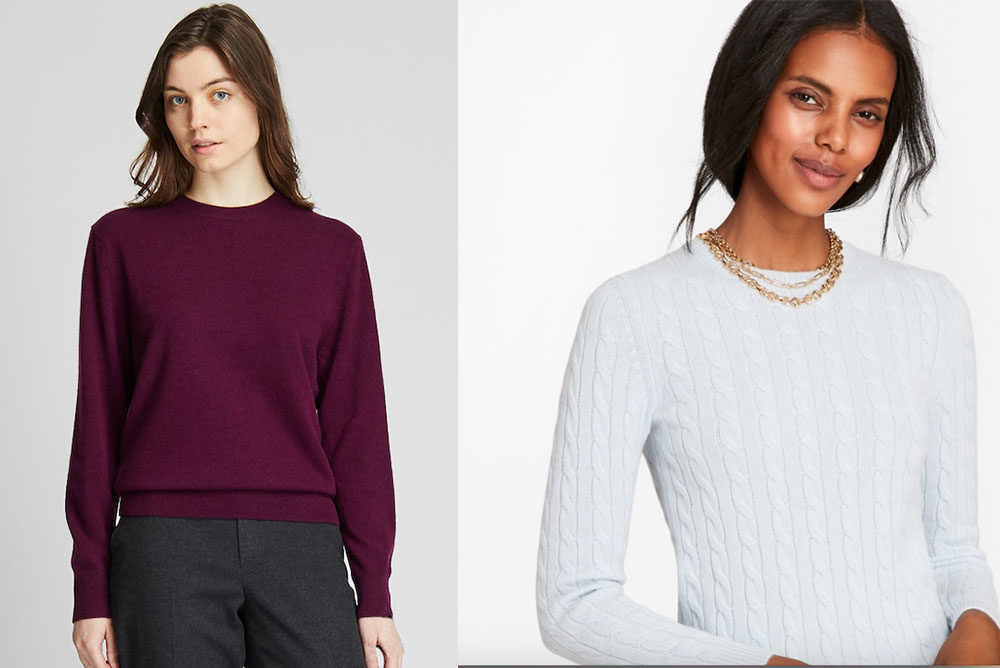
LEFT: A 100% cashmere crewneck sweater with a relaxed silhouette from Uniqlo is $79.90. Besides dark purple, shown here, it’s available in 13 other colors. RIGHT: From Brooks Brothers, this pale blue Cashmere Cable Crewneck Sweater, available in 15 other colors, including pale pink, peach and light green, is $398. It’s manufactured in Italy. Brooks Brothers also has factories in Scotland where the yarn is spun and knitted.
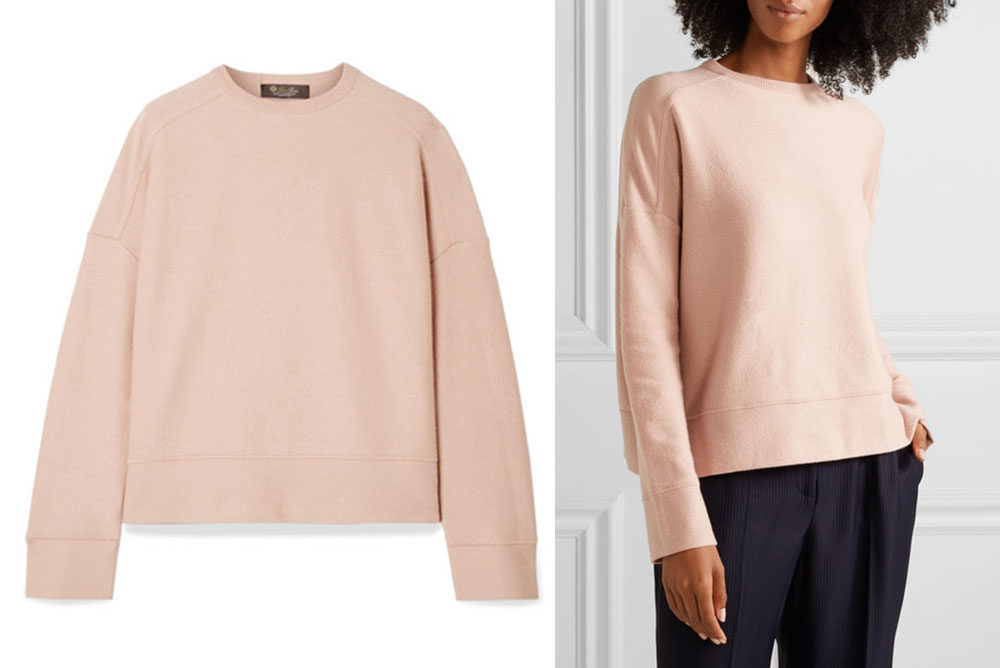
A simple blush Cashmere Sweater, such as this one from Loro Piana, sells for $2,150. A brand like Loro Piana uses Italian mills that have been manufacturing cashmere products for hundreds of years. According to Pier Luigi Loro Piana, deputy chairman of the Loro Piana textile and luxury goods company, “The levels of quality depend on several things: The origin of the cashmere, the micron difference (the size of the individual hairs), the technology we apply in finishing the fabric. And part of it is quantity: We make in small series—100 sweaters, not 1 million. Our sweater may weigh 300 grams, not 200 grams. And of course cashmere sweaters made in China have a lower labor cost. All of our things are made in Italy. At every stage of the operation, we are driven not by cost-saving but by quality.”
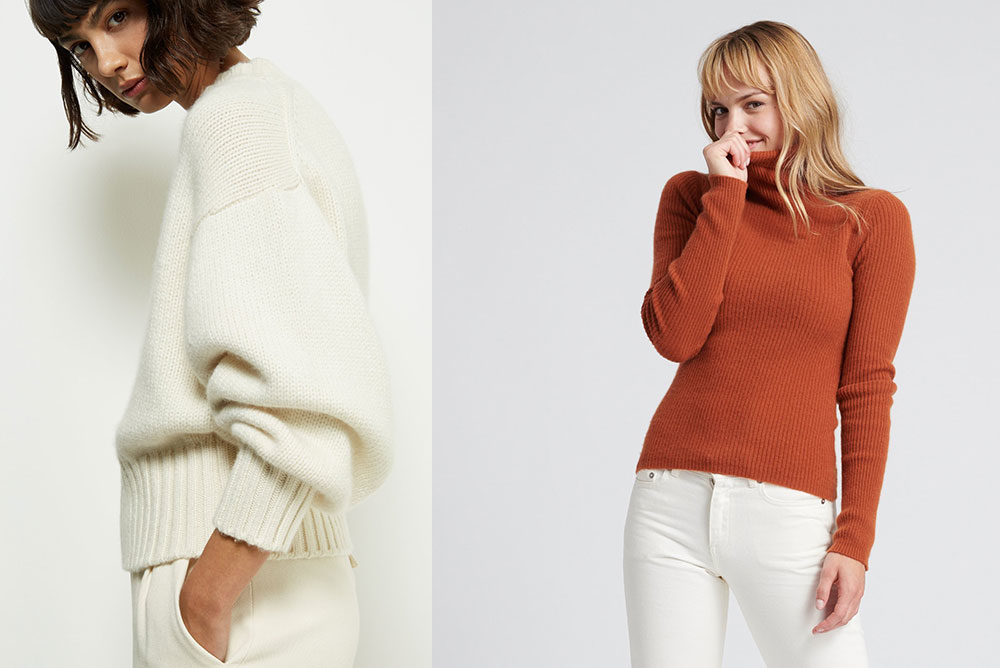
LEFT: Pringle of Scotland’s Cashmere Jumper in Cream ($1,171) with high neck, voluminous sleeves and fitted waistline looks heavy but feels light, “suited to the movements of modern life.” RIGHT: The founder of cashmere label Naadam was inspired to transform the cashmere supply chain by purchasing it directly from remote herders for fair prices. Nadaam also touts its sustainable grazing practices. This 100% Mongolian Cashmere Ribbed Turtleneck ($175) is lightweight enough for layering.
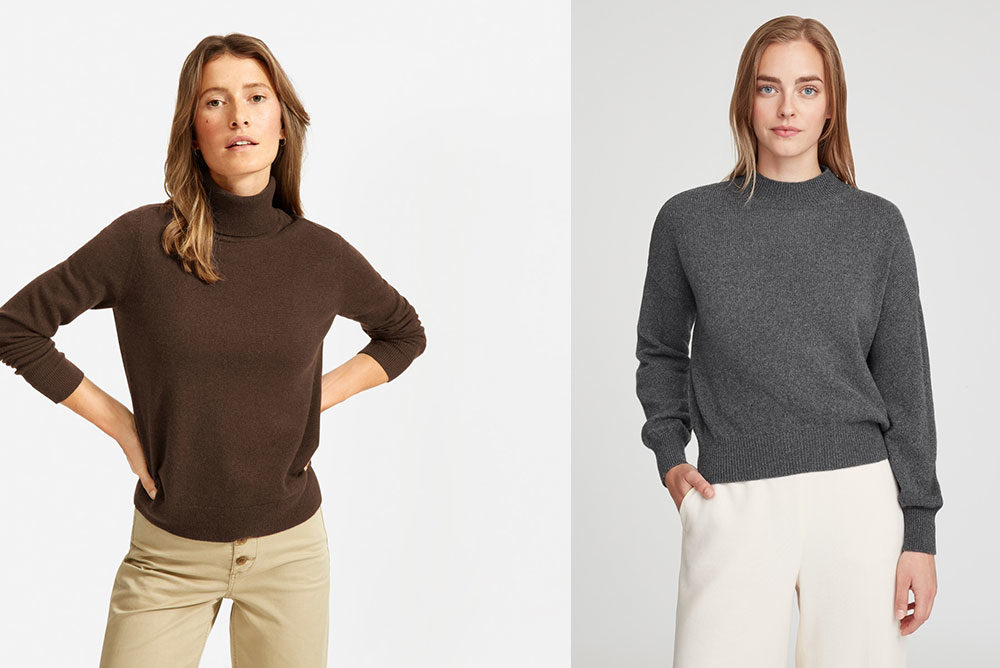
LEFT: Everlane’s Cashmere Turtleneck (available in four other colors, $130) is 100% Grade-A cashmere from Mongolia and is knitted at a factory vetted for ethical labor practices in Dongguan, China. RIGHT: “Less is more” brand Cuyana recently introduced recycled cashmere into their collection. This Recycled Cashmere Crewneck Sweater ($255) manufactured with the company’s partner mill in Bologna, Italy, is a blend of 95% recycled cashmere and 5% virgin wool.
—Janet Kelly
MyLittleBird often includes links to products we write about. Our editorial choices are made independently; nonetheless, a purchase made through such a link can sometimes result in MyLittleBird receiving a commission on the sale, whether through a retailer, an online store or Amazon.com.

I also love that Pringle jumper. Here’s hoping someone in my family reads my comment and puts that on their list for me!!
thanks for the primer on cashemere
Thanks for reading, Beth. Like that Pringle sweater, too. Don’t know if anybody I know (hint, hint) is reading.
That white Pringle “jumper”…mmmmmmmmmm
Great education in cashmere. Thanks! I’m partial to Everlane’s sweaters (actually everything Everlane), and have a few that I love, one in that blush color you feature, though it cost a lot less than the one above.
OMG, that one from Loro Piana. Crazy expensive. I like Everlane in general but don’t have any of their cashmere sweaters. Great to know you like them.
Thanks, Nancy.